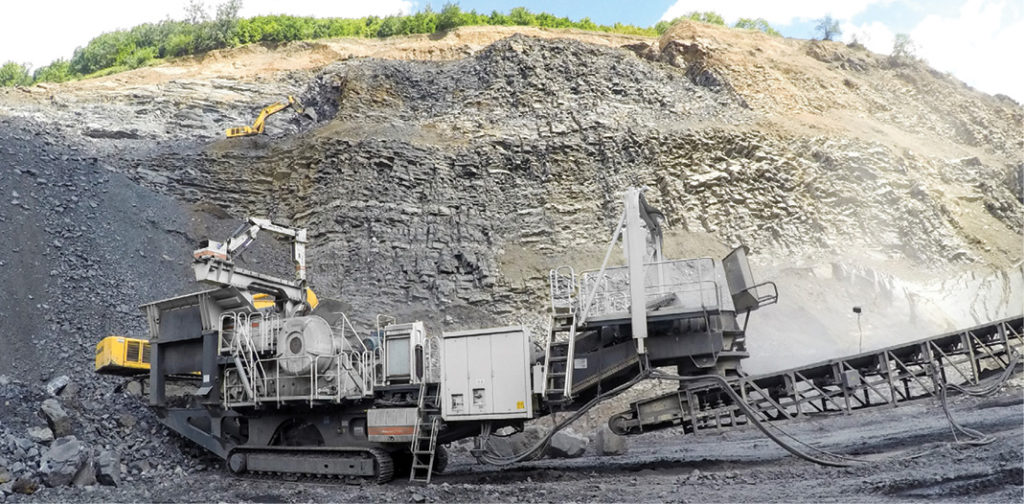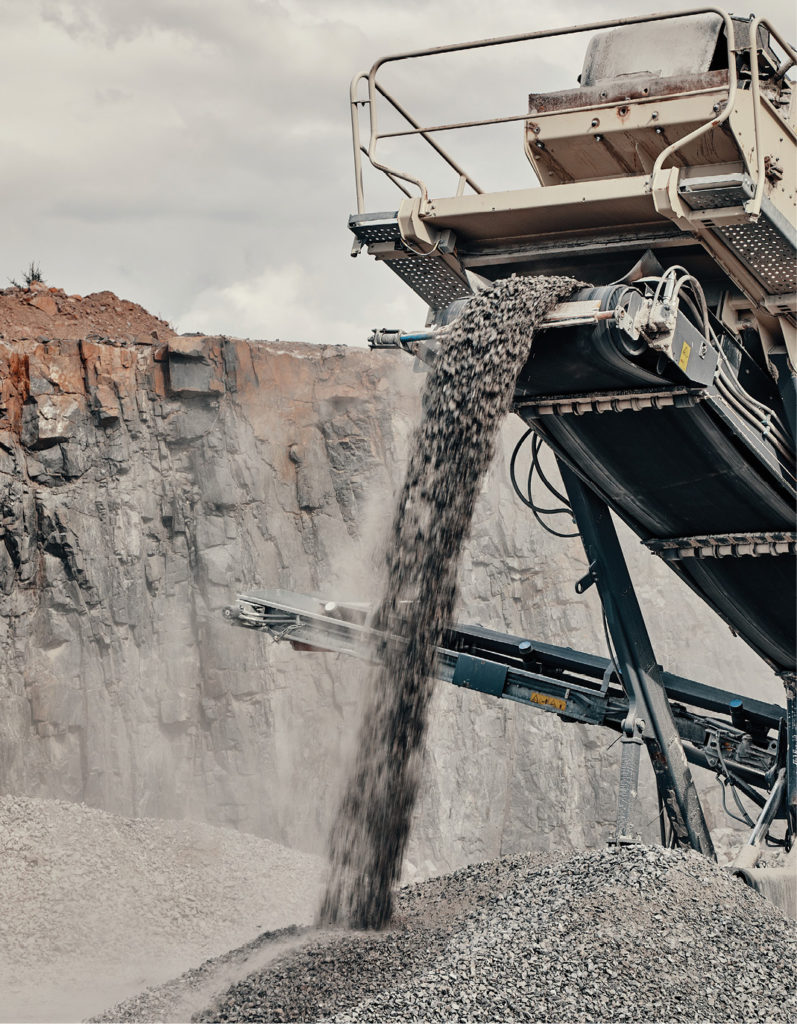Mobile crushing carves a path into mining

When visiting a mine site, our eyes are drawn to the big equipment: primary gyratories, grinding mills, and the other core equipment that are well-known in the mining industry. Recently, we have seen a change in the dynamic where it is not just about stationary equipment. The flexibility of mobile crushing units has become a viable option for mines around the world.
Mobile crushing plants are often operated by mining contractors, providing crushing and screening services for the mine at a cost per tonne basis. This saves the mine CAPEX, allows for more predictability in OPEX, and releases limited resources and know-how to more valuable work at the mine.
“It is nothing new that mining contractors are crushing aggregates for mine road maintenance, tailing dams, stemming, to name few of the applications,” says Julius Makela, vice-president of mid-sized and mobile crushers at Metso.
What is new is that you see them more often crushing the ore for concentration plant. This is true, especially in small to medium size operations, such as lithium, gold, and silver. In higher volume operations like iron and copper ore, it is not that common to use mobile units. You will see them around crushing ore during maintenance breaks, as a backup, or when expanding production or when testing impact of different gradations to refining process.
One typical application is to have primary crushing in the pit to reduce and ease haulage, especially when combined with bulk ore sorting or when dealing with different ore grades and waste ore. Another application where you might find mobile crushing units is in underground operations. Mobile crushing units could provide a very flexible and cost-efficient solution for tight and space restricted areas.
In the past, mobile crushing units were not as energy efficient as stationary units. This is now changing with an industrywide focus on sustainability.
“Sustainability, being so critical for mine operators, has forced them to think differently about the solutions they have on site. This has also forced OEMs to consider what we can do to support our customers in a unique way,” stated Julius.
Well-known in the industry are the Metso Lokotrack mobile crushing solutions. Originally developed in 1985, Lokotracks are now evolving to meet the needs of a mining duty application.

patented centrifugal conveyor on the same chassis. CREDIT: METSO
Most of the mining size mobile units are fully electric or hybrids, such as Metso Lokotrack LT130E and LT330D. Hybrid means that there is diesel engine onboard, which runs the generator. Crusher, conveyors, feeders, and screens are all electric driven, and hybrid units can be plugged into an external power grid when available. With onboard process control systems and remote monitoring, they are fully equipped mobile crushing plants.
The Lokotrack e-Power solutions give you twice the choice, with new job opportunities, cost savings, and ease of maintenance. Additionally, the solution has been tested, proven, and developed for decades.
“Fuel cost is getting higher and higher everyday. We have seen customers save up to 40% in fuel costs without sacrificing productivity, which they are very happy to see,” says Justin Ayotte, vice-president of sales and service for Canada at Metso.
Another advantage of the Lokotrack is that the design has been adapted to respect strict noise and dust emission regulations. This contributes to a safer work environment, while increasing the overall sustainability of the operation. So, electric power not only has the advantage cost efficiency, but also of being quiet, emission-free, and economical whenever the grid is available.
One may wonder why diesel engines are still needed where there is always electricity available at mine site. Mobile units and mining contractors are often the first equipment and operators you see around the new mine, even before the roads or power grid exist. Once the mine is running, they work in the pit or opening new deposits nearby. For those reasons, you need fully mobile, self-propelled equipment. When working in the same location(s) for longer times (e.g., when waste rock or ore is brought in by dump trucks), then typically, the power station is arranged by the mining company. This is done to reduce cost and save energy to be as sustainable as possible.
Mobility also helps to improve work safety and risk of oil spillages (or other operation-related risks) during maintenance, as mobile crushers can be tracked to a designated maintenance area. Such a maintenance area should include overhead cranes, proper working platforms or man lifters, tools, and oil handling equipment, just to name a few.
Overall, it is not a secret that mobile crushing units are making their way into mining and making an impact. They provide a flexible solution to an ever-changing industry that is also enabling even more sustainable mining. CMJ
Comments